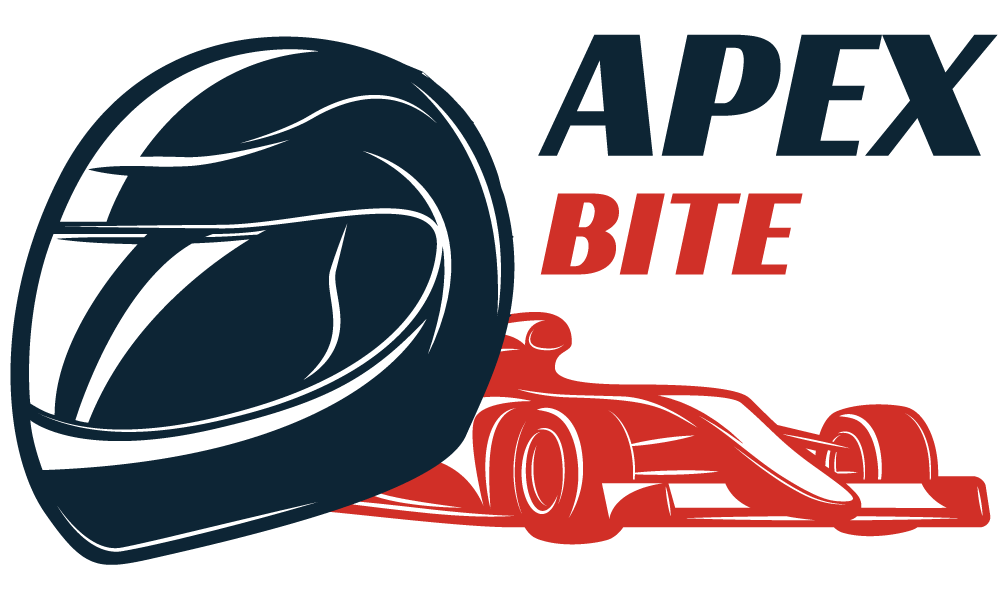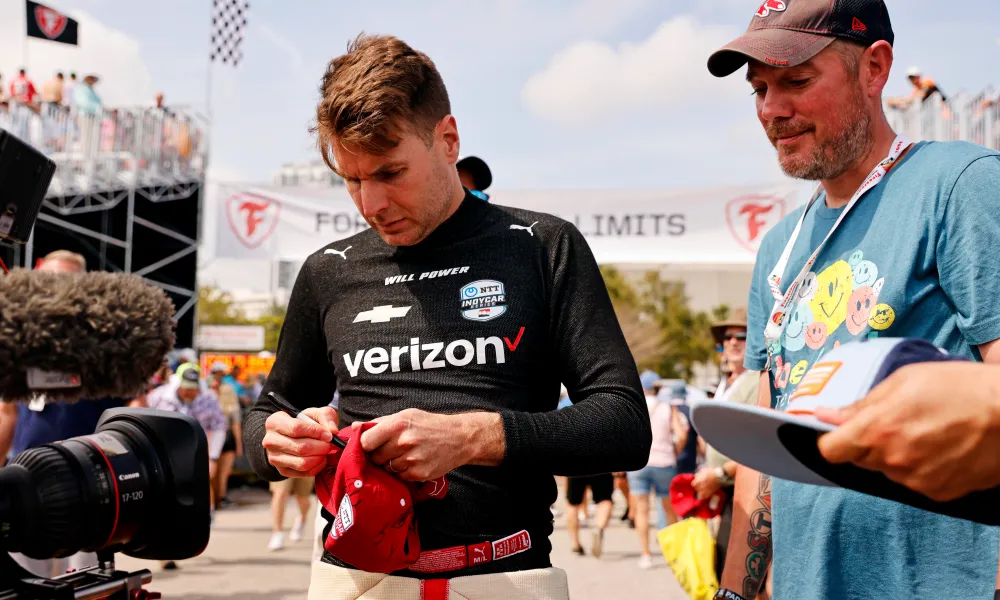Welcome to the most glamorous event on the F1 calendar, the Monaco Grand Prix.
If F1 were a movie, this would be the glitzy red carpet premiere.
The event takes place in late May or early June, and is like the Oscars, the Met Gala, and the Super Bowl all rolled into one — but with added horsepower and the waft of burning rubber.
This world-famous racing spectacle, which first revved its engines back in 1929, is held on the Circuit de Monaco. And let me tell you, this isn’t just any racetrack. Picture this: sleek, high-powered F1 cars zipping through the narrow, winding streets of Monaco.
Throw in an exciting tunnel, eye-watering elevation changes, and you have yourself a track that’s not just demanding; it’s as dramatic as a season finale of your favorite binge-watch series.

Now, before you start thinking that this is just about making really, really fast left turns, let me hit you with a dose of prestige.
The Monaco Grand Prix, the Indianapolis 500, and the 24 Hours of Le Mans form what’s known as the ‘Triple Crown of Motorsport.’ Think of it as the royal trifecta of car racing – it’s like having the King, Queen, and Jack of auto-racing all in one hand.
The Monaco GP’s prestige isn’t just about the glamour though. This track is as dangerous as it is dazzling. Despite the relatively slow average speeds (compared to other F1 circuits), racing here is like navigating a high-speed maze without a map. One wrong move and bang, you’re having a meeting with a safety car.
And fun fact, the Monaco GP is the only race that doesn’t respect FIA’s rule of a minimum race distance of 305 kilometers for F1 races.
Our star-studded saga started on April 14, 1929. Since then, it’s hosted pre-Second World War European Championships and was included in the first World Championship of Drivers in 1950.

It’s been christened the European Grand Prix twice – in 1955 and 1963. But enough about dates and titles. Let’s talk about the stars of our show, the drivers.
First up, we have ‘Mr. Monaco’ himself, Graham Hill. With his five wins in the 1960s, he was as synonymous with Monaco as glittering yachts and the scent of sea spray.
But even ‘Mr. Monaco’ bows to the ‘King of Monaco,’ Ayrton Senna, who has won the race more times than anyone else. His record? A staggering six victories, including five consecutive wins from 1989 to 1993. Now that’s a winning streak even a royal flush can’t beat.
So, buckle up! You’re about to dive headfirst into the adrenaline-fueled world of the Monaco Grand Prix
Picture this: It’s the roaring 1920s, jazz is all the rage, flapper dresses are in vogue, and the first Monaco Grand Prix is about to make its debut.
But, let’s put it in reverse for a moment. The Monaco Grand Prix was the brainchild of Antony Noghès, a man whose name rings out in Monaco like a Ferrari engine on the starting grid.
He was the one who proposed creating a grand prix right in the heart of Monte Carlo. He had the official thumbs up from Prince Louis II, and a high-five from Louis Chiron, a local Grand Prix driver, who believed Monaco’s twisty topography was as perfect for a race track as a fresh set of tires on a speedy F1 car.
So, on a spring day in 1929 — April 14th, to be precise — the first Monaco Grand Prix was off to the races. The man who saw the checkered flag first? A chap named William Grover-Williams, driving a Bugatti Type 35B that was as shiny as a newly minted penny.
And get this: it was an invitation-only event. The first Monaco Grand Prix was more exclusive than a secret society meeting in a hidden cave.
Early F1 championship days in Monaco
Going further down the timeline, in 1950, the Monaco GP had just zoomed into the F1 World Drivers’ Championship.

Here, Juan Manuel Fangio clinched his first victory in a World Championship race. And guess who showed up at the ripe age of 51, Louis Chiron, netting himself a solid third place!
The race took a pit stop in 1951 due to budgetary concerns and a lack of regulations, kind of like how you’d pause your road trip because you ran out of snacks and GPS signal.
After a couple more years of going around in regulatory circles, the Monaco Grand Prix was back on track in 1955, starting a streak of 64 consecutive races. Talk about endurance…
The Graham Hill Era

Fast forward to the 1960s, where Britain’s Graham Hill, affectionately dubbed “Mr. Monaco” had his victory lap five times! Yes, five! In 1965, he pulled off a “hold my steering wheel” moment, swerving up an escape road to avoid a slow backmarker, then zoomed from fifth place to the win. Not to be left out, Hill’s teammate, Jackie Stewart(yes, that Sir Jackie Stewart that was trying to get Federer to an interview 2 weeks ago), took home the trophy in 1966.
Now, let’s pump the brakes a bit. As we headed into the 70s, safety became a hot topic thanks to Jackie Stewart.
Increasing safety
In 1969, for the first time in history, Armco barriers were placed at specific points on the circuit, a far cry from the “drive-and-hope-you-don’t-hit-a-lamp-post” days.
Over the years, the circuit underwent more alterations, adding Armco barriers and reconfiguring the track around new facilities like the Rainier III Nautical Stadium.
The Rainier III Nautical Stadium was constructed where the straight that went behind the pits was and the circuit introduced a double chicane that went around the new swimming pool (this chicane complex is known today as “Swimming Pool”).
This created space for a whole new pit facility and in 1976 the course was altered yet again; the Sainte Devote corner was made slower and a chicane was placed right before the pit straight.
Business interests
Meanwhile, off the track, the drama was revving up. Enter Bernie Ecclestone, team owner and grandmaster negotiator, who put the pedal to the metal, fighting for more cars in each race. Despite a few skids and spins, Ecclestone managed to up the participant count to 26, matching most other circuits.
Through the years, the unforgiving Monaco track, known for its tight corners and slower speeds, threw up unexpected winners like a surprise party at the finish line.
In the 1982 race René Arnoux led the first 15 laps, before retiring. Alain Prost then led until four laps from the end, when he spun off on the wet track, hit the barriers and lost a wheel, giving Riccardo Patrese the lead.
Patrese himself spun with only a lap and a half to go, letting Didier Pironi through to the front, followed by Andrea de Cesaris.
On the last lap, Pironi ran out of fuel in the tunnel, but De Cesaris also ran out of fuel before he could overtake.
In the meantime, Patrese had bump-started his car and went through to score his first Grand Prix win. – See the race highlights
The Circuit
The track has seen a few facelifts over the years, but it’s largely remained the same.
Despite some minor updates, the Monaco GP Circuit is still considered the ultimate test of driving skills in Formula One.
It’s got the slowest corner in F1 (the Fairmont Hairpin, taken at just 48 km/h or 30 mph) and one of the quickest (the flat-out kink in the tunnel, taken at 260 km/h or 160 mph).
The building of the circuit takes six weeks, and the dismantling after the race another three weeks.

Source: http://motor1.com
Due to its tight and twisty nature, the circuit is more about the driver’s skill than the power of the car. Imagine riding a bicycle around your living room – as Nelson Piquet once compared it to. Only in this case, your living room is visited by millions of F1 fans worldwide!
Safety is a priority (remember the shatterproof fences?), but the circuit is not without its challenges. It’s a bit of a thrill-seeker, as Michael Schumacher noted before the 2012 Grand Prix, calling the additional risk “justifiable once a year”.
What makes Monaco GP circuit truly unique is the demands it puts on the cars. High downforce is used to shorten braking times and keep cars stable under acceleration.
And let’s not forget the cooling issue. F1 cars don’t have any form of forced cooling, relying solely on air moving over the car to remove heat from the radiator elements.
In the past many teams used to adjust the radiator intakes to allow for extra airflow, creating the once-common “Monaco nose”. Before 2014, teams also used closer ratio gears, as there are hardly any long straights in Monaco and acceleration is at a premium.

The “Monaco Nose”
We’ve reached the final lap of our jaunt down memory lane. You’d think a track with so much history, so much drama, would be a thrill ride every second, right? Well, not everyone thinks so.
In recent times, some critics have branded the Grand Prix as the “most boring race” of all circuits. A tough pill to swallow for an event that’s so steeped in tradition and glamour.
Some drivers have even expressed that overtaking attempts are as rare as a unicorn. Quite a few races have seen the pole position holder bag the win, leading to some snooze-fest accusations.
But here’s the thing, it may not have the overtaking thrills of some other tracks, or the wide lanes that make for high-speed, wheel-to-wheel duels. But what it lacks in those areas, it makes up for with its character, its history, and its enduring charm.
After all, this is a circuit that weaves through a city’s streets, past luxury yachts and beneath the shimmering lights of the glamorous hotels. It’s a race that has crowned champions, sparked controversies, and has seen triumph and tragedy in equal measure.
So, whether it’s a yawn-inducing snoozefest or a nail-biting spectacle of pure racing, the Monaco GP Circuit is undeniably iconic and it won’t be going anywhere anytime soon.





